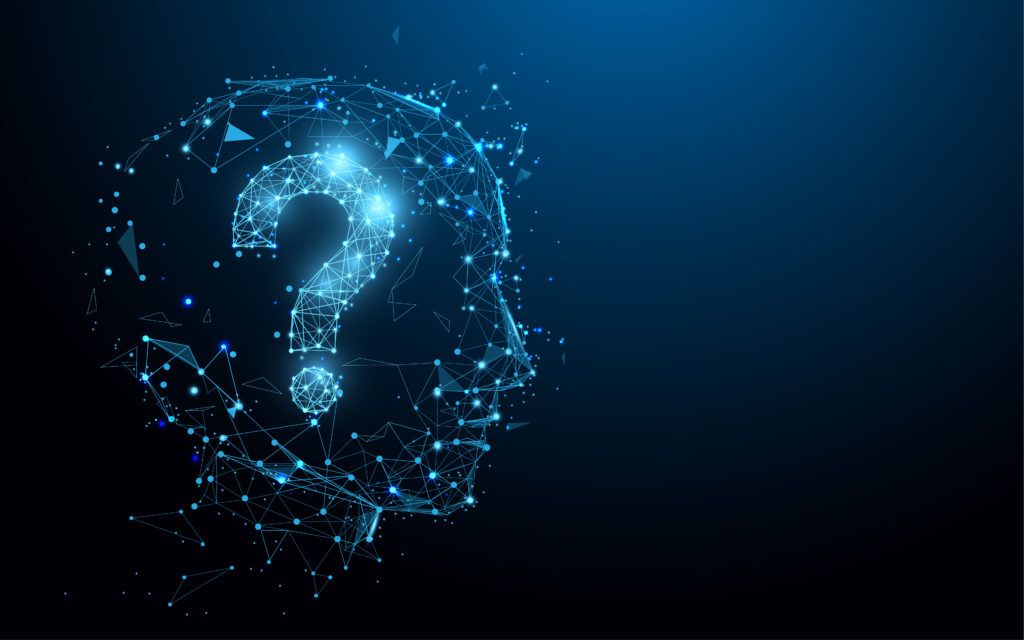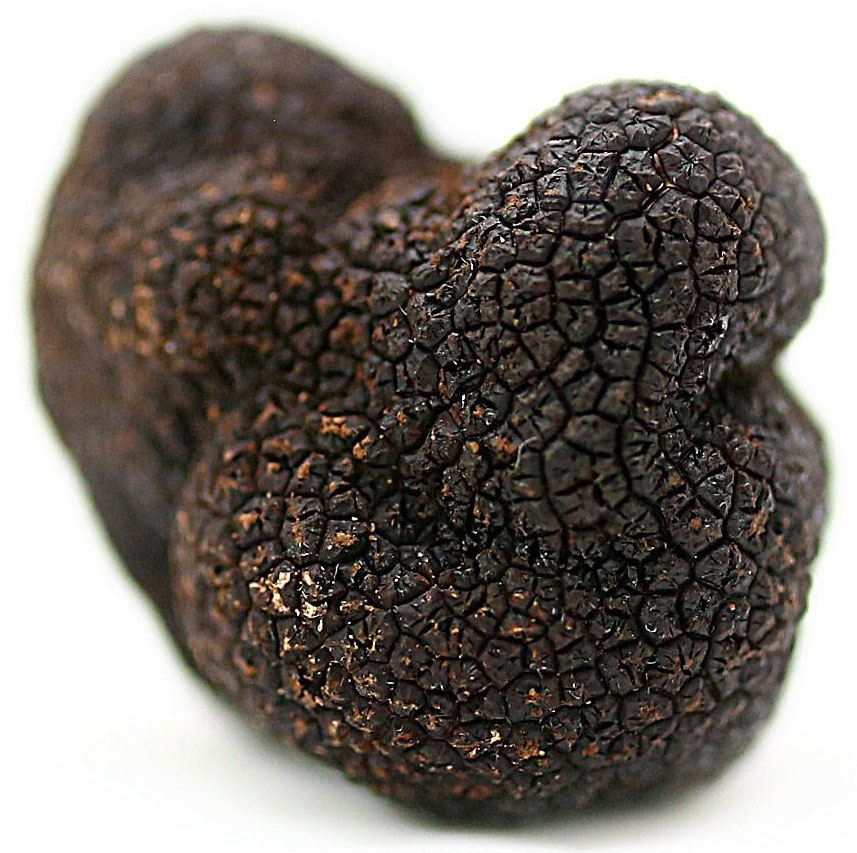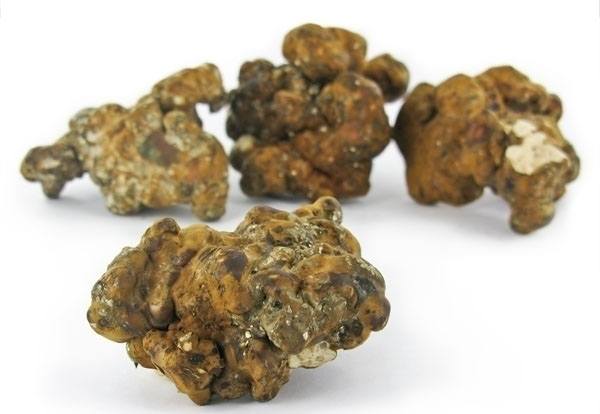
“Magic” truffles have been rising in popularity since 2008 when the Netherlands outlawed psilocybin mushrooms. The new legislation did not cover psilocybin-containing “magic” truffles, and the exclusion has fueled a growth in sales. Despite little research into the compounds in psilocybin truffles, many people assume there is little or no difference between them and magic mushrooms.
Growing interest in the benefits of psychedelics for treating mental health conditions like depression and anxiety has led COMPASS Pathways to manufacture 20,000 doses of pure psilocybin for use in research. Other researchers use dried psilocybin mushrooms in their studies. A third method for ingesting psilocybin is using psilocybin truffles, also known as magic truffles.
Psilocybin Truffles Versus Culinary Truffles
Psilocybin truffles technically aren’t truffles like those used in cooking (Figure 1), although they both grow underground. Psilocybin truffles are dense, hard nodules (more accurately called sclerotia) that form on the mycelium of a fungus (Figure 2). The mycelium is a vast network of interconnected filaments that branch out from the mushroom below ground, above, or both. Sclerotia often grow during times of drought or other conditions that don’t favor the mushroom growing. Magic mushrooms use sclerotia to store food and nutrients to survive during tough times. Sclerotia are different from culinary truffles (which belong to the genus Tuber) not just in their appearance but in their chemical makeup as well.

Figure 1: A culinary truffle. Image from Perigord.com.
The Importance of the Entourage Effect
There are critical differences in the three ways of administrating psilocybin (i.e., the pure chemical, magic mushrooms, and truffles). Pure psilocybin allows accurate and precise dosing and is showing promise in clinical studies. However, research using the pure chemical alone does not provide the whole picture of the potential effects and benefits from the naturally-occurring and complete chemical cocktail provided by mushrooms. Just like the entourage effect in the medicinal cannabis industry, studies have shown that the psychedelic compounds in magic mushrooms work together, resulting in the overall psychedelic experience.1

Figure 2: The sclerotia of Psilocybe Hollandia. Image from Zamnesia.com.
Magic mushrooms and psilocybin truffles, on the other hand, provide a natural cocktail of psychedelic components that deliver the complete user experience. However, a search of the scholarly literature shows that no one is researching the entourage effect in magic mushrooms or psilocybin truffles. Therefore, the extent of interactions and synergy of the compounds is not understood. Also, psilocybin truffles are less understood than psilocybin mushrooms in the first place. In spite of this, people often believe the compounds and amounts of them in psilocybin truffles are the same as what studies have found in various species of psilocybin mushrooms.
The Molecules in Psilocybin Truffles Compared to Magic Mushrooms
Unfortunately, there is little research into the compounds that are in magic truffles. Several websites assume that psilocybin truffles contain the same compounds as the mushroom fruiting bodies. Is this only because the effects are similar? Are the amounts of compounds in psilocybin truffles identical to what is found in psilocybin mushrooms? Are there psychoactive compounds in truffles that are not in magic mushrooms?
Extensive searching of several online psilocybin truffle e-commerce sites failed to find any cited literature to back up claims of similar chemical composition in both psilocybin truffles and psilocybin mushrooms. One website bases its claims only on the statement (with no reference) “Some people state that magic truffles are less potent than magic mushrooms. However, as both are simply different parts of the same organism, they both contain the exact same psychoactive alkaloids—psilocybin, psilocin, and baeocystin being the most prominent. Therefore, we can assume that they have the same potency.”
It may be true that the chemical content of psilocybin truffles is the same as magic mushrooms. However, until science disproves or confirms the assumption, it remains a mystery. A search of the scholarly literature found two 2018 studies that examined the effects of psilocybin truffles. Fortunately, the researchers analyzed the compounds in psilocybin truffles as part of their study design.
- One study averaged three samples of psilocybin truffles for four alkaloids known to be in the fruiting bodies.2 The concentrations were almost identical for the three samples. The averages were:
- Psilocybin = 1,595 µg/g
- Psilocin = 85 µg/g
- Baeocystin = 31 µg/g
- Norbaeocystin = 8 µg/g
- Another study analyzed a 15 g sample of truffles from Psilocybe Hollandia for the amounts of psilocybin and psilocin:3
- psilocybin = 1.9 mg
- psilocin = 10.5 mg
The analysis of the second truffle sample is particularly intriguing. The amount of psilocin is over five times that of psilocybin. In contrast to truffles, magic mushrooms usually contain less psilocin than psilocybin, sometimes only trace amounts.4 Do these data suggest that some psilocybin truffles are a better source of psilocin than psilocybin mushrooms?
Conclusion
Magic truffles are finding their way into scientific studies as a source of psychedelic compounds. There is even less understanding about the chemical makeup of psilocybin truffles than psilocybin mushrooms. And, there appears to be an assumption that they contain the same compounds in equal amounts. Using magic truffles in human studies adds an uncontrolled variable that can affect the results. More research is needed on the compounds in magic truffles (and magic mushrooms) to understand how they can be used to the greatest benefit.
